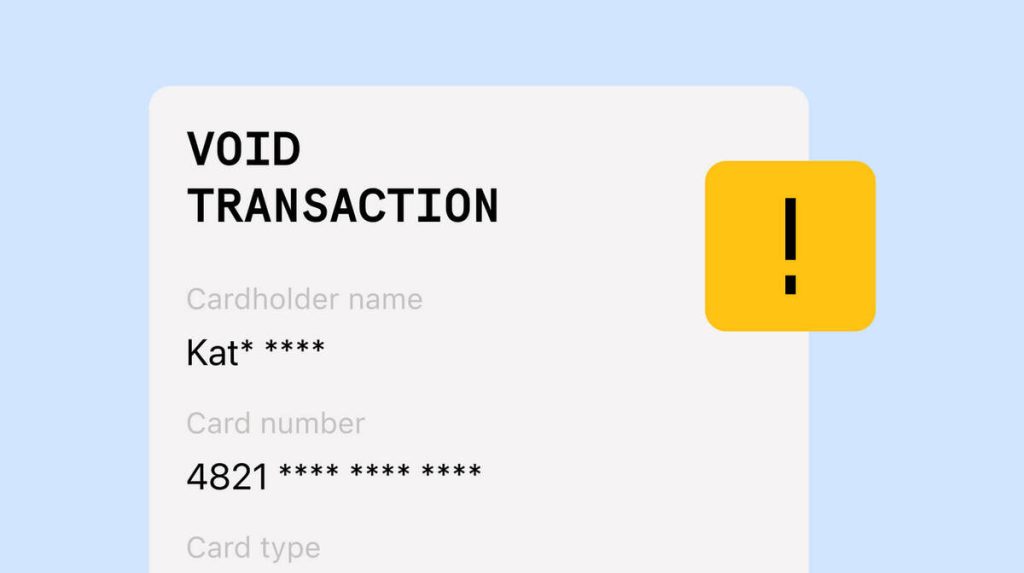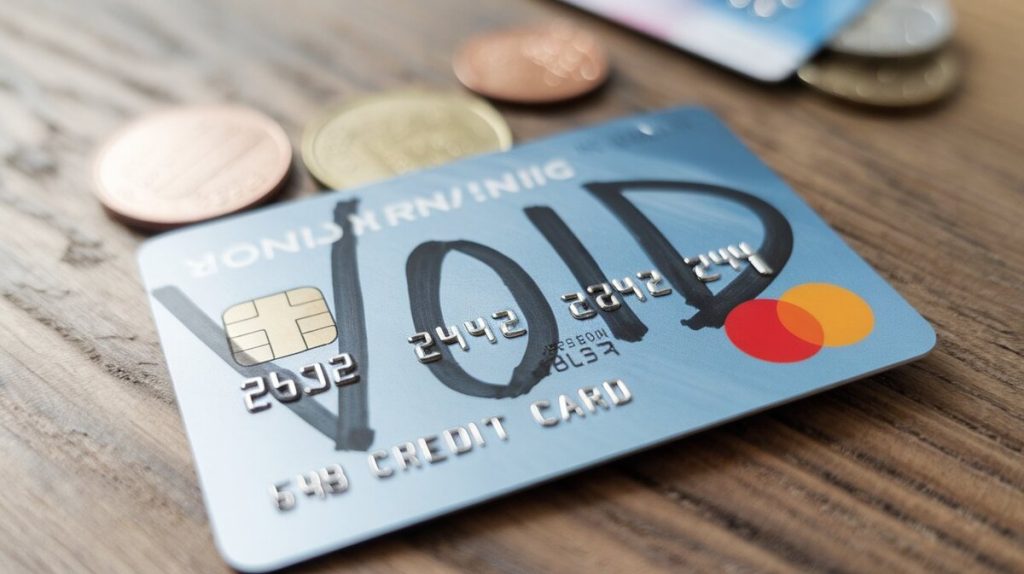Introduction
A void transaction is a key concept in credit card payment processing. It occurs when a merchant cancels a credit or debit card transaction before it has been settled. Unlike a refund, where the funds are first transferred and then returned, a void transaction halts the transfer entirely. Understanding how void transactions work is essential for both merchants and consumers to manage financial interactions effectively and avoid unnecessary complications.
What is a Void Transaction?
A void transaction cancels a payment before it is finalized, preventing any transfer of funds from the cardholder’s account to the merchant. According to official guidelines from Mastercard and Visa, voiding a transaction is the most efficient way to rectify an error or address a customer’s cancellation request before the transaction reaches settlement. Since the transaction is never fully processed, voids do not incur processing fees, making them more cost-effective than refunds.
Key Points:
- Timing: Must be completed before the transaction is settled.
- Processing Time: Typically remains pending for 24-48 hours before disappearing from the customer’s account.
- Comparison to Refunds: No funds are transferred; hence, there are no fees, and the transaction is simply erased from records.
Common Scenarios Leading to Void Transactions
Void transactions are commonly used in various business settings to address errors or prevent unnecessary charges. Here are some typical scenarios:
- Data Entry Errors: A cashier may enter the wrong amount during a transaction. Voiding the transaction immediately corrects the error without financial consequences for either party.
- Duplicate Transactions: If a transaction is accidentally processed more than once, the merchant should void the duplicate to prevent double charging.
- Customer Cancellations: When a customer decides not to proceed with a purchase shortly after authorization, the merchant can void the transaction, avoiding the need for a more complex refund process.
- Fraud Prevention: Merchants may void transactions if they suspect fraud, preventing potential losses.
Table 1: Common Reasons for Void Transactions
| Scenario | Description | Impact on Merchant | Impact on Customer |
|---|---|---|---|
| Data Entry Errors | Incorrect amount entered during transaction | Requires immediate action | Temporary hold on funds |
| Duplicate Transactions | Transaction processed more than once | Potential loss if not voided | Double charge, leading to disputes |
| Customer Cancellations | Customer cancels shortly after authorization | Simplifies handling | No funds debited |
| Fraud Prevention | Suspected fraud detected before settlement | Avoids financial loss | Prevents unauthorized charges |

How Void Transactions Affect Consumers
For consumers, void transactions typically have minimal impact. Although the transaction may temporarily appear as pending, it does not affect the account balance after being voided. According to Checkout.com, pending status generally lasts 24-48 hours before the transaction disappears completely from the account statement.
Key Points:
- Pending Status: Transaction may show as pending, but no funds are deducted.
- No Financial Impact: Since the transaction is not settled, there is no actual debiting of funds.
How Void Transactions Impact Merchants
For merchants, void transactions serve as a critical tool for managing payment errors and customer service issues efficiently. Proper documentation and timely action are essential to ensure accurate financial records and avoid potential disputes.
Key Impacts:
- Accounting: Voided transactions must be documented to maintain accurate financial records. This prevents discrepancies during revenue reconciliation.
- Inventory Management: In retail, inventory levels must be adjusted following a voided sale to ensure accurate stock records.
Table 2: Merchant Actions for Voided Transactions
| Action | Description | Importance |
|---|---|---|
| Document Voided Transactions | Maintain records of voids for reconciliation | Ensures accurate financial reporting |
| Adjust Inventory Levels | Revert inventory to pre-transaction status | Prevents stock discrepancies |
| Customer Communication | Inform customers promptly about voids | Builds customer trust |
Void Transactions vs Refunds vs Chargebacks
Understanding the differences between void transactions, refunds, and chargebacks is crucial for merchants to handle payment disputes efficiently. Here’s how these processes compare:
- Void Transactions:
- When Used: Before settlement.
- Impact: No funds are transferred; no fees incurred.
- Refunds:
- When Used: After the transaction is settled.
- Impact: Funds are transferred back to the customer; processing fees may apply.
- Chargebacks:
- When Used: When a customer disputes a transaction after settlement.
- Impact: Can lead to penalties for the merchant; involves fees and potential account freezes.
Table 3: Comparison of Transaction Reversal Methods
| Method | When Used | Fees Involved | Financial Impact on Merchant | Financial Impact on Customer |
|---|---|---|---|---|
| Void Transaction | Before settlement | No processing fees | Minimal, as no funds are transferred | None, as no funds are debited |
| Refund | After settlement | Transaction processing fees | Merchant may incur fees | Refund is credited to account |
| Chargeback | After settlement and dispute | Chargeback and processing fees | Significant impact; could lead to penalties | Funds returned after dispute resolution |

Best Practices for Handling Void Transactions
To manage void transactions effectively, merchants must implement best practices that ensure timely action and accurate record-keeping:
- Act Quickly: Voiding a transaction as soon as an error is detected or a cancellation is requested is crucial. This prevents the need for refunds or chargebacks and simplifies financial management.
- Train Staff: Ensure employees are well-trained in payment processing and void procedures. Regular training reduces errors and improves transaction accuracy.
- Use Secure Payment Systems: Implement secure payment systems with fraud detection capabilities. Merchants should partner with reliable providers, such as Merchanto.org, an official partner of VISA and MasterCard in the chargeback prevention sector. Partnering with experts like Merchanto.org enhances transaction management and reduces the risk of chargebacks. Explore their services here.
Table 4: Best Practices for Managing Void Transactions
| Best Practice | Description | Benefit to Business |
|---|---|---|
| Act Quickly | Void transactions immediately upon identifying an error or cancellation | Avoids complications and fees |
| Staff Training | Regular training on payment processing and void procedures | Reduces error rates and improves efficiency |
| Secure Payment Systems | Utilize systems with fraud prevention and secure transaction processing | Minimizes fraud risk and improves customer trust |
| Partner with Specialists | Collaborate with experts like for advanced chargeback prevention | Enhances transaction management and dispute resolution |
Conclusion
Void transactions are an essential aspect of payment processing that helps businesses manage financial interactions efficiently. By promptly voiding transactions when necessary, documenting all voids accurately, and utilizing secure payment systems, merchants can avoid the complications associated with refunds and chargebacks. Partnering with experts in chargeback prevention can further strengthen a business’s ability to manage disputes and maintain customer satisfaction.
Following these practices will not only ensure smooth transaction management but also contribute to a more secure and efficient payment processing environment, ultimately benefiting both merchants and consumers.



